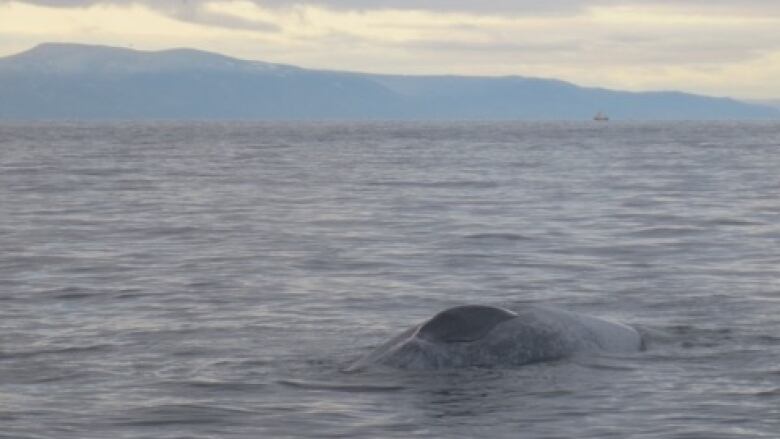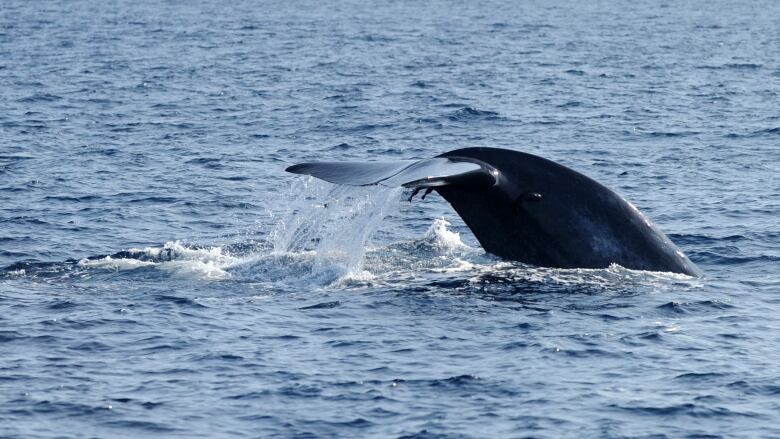Carcass of blue whale, an endangered species, found drifting in St. Lawrence Estuary
Dead calf was spotted afloat in shipping lane, which could mean it was hit by large vessel

Marine biologists in Quebec are hoping to learn more about what caused the recent death of ablue whale, an increasingly rareand endangered species.
The whale's carcass was spotted several times by a crew fishing near Mont-Louis in the Gasp region at the end of October.
At first, it was believed to be a Minke whale, a smaller, more common variety of rorqual whale.
But when marine biologists saw a photo of the animal about a month later, they realized it was a blue whale probably a very young one.

'Any loss is a bad loss'
RobertMichaud, a marine biologist andco-ordinatorof the Marine Mammal Emergency Network inTadoussac, explained thatonly small portion of a blue whale carcass shows when it floats in water.
They usually drift belly up, making them difficult to identify, he said, adding that a full-grown Minke whale is about the same size as a baby blue whale.
The World Wildlife Fund estimates there are between 10,000 and 25,000 blue whales left on the planet.
Marine biologist Richard Sears said when it comes to blue whale deaths, it's hard to say definitively whether losing a baby is worse than losing an adult.
"We've seen so few calves in the last 38 years only 23, in fact, on this side of the Atlantic that to lose a young animal that is part of replenishing the population would not be good," Searssaid.
"Any loss from the population of blue whales is a bad loss."
How did whaledie?
The calf's carcasswas found in a shipping lane, which could mean it was hit by a large vessel.
"The problem is there are no overt, evident marks on the carcass, but that doesn't mean anything because when a whale is struck, sometimes you see very little marks on them and most of the damage is done inside," Sears said.

He said the whale carcass is probably still drifting. Because it took so long to identify it as a blue whale, they missed the opportunity to use data to predict its path.
Biologists will have to wait to see ifthe carcass washes ashore in order to conduct a necropsy and learn more about how the whale calfdied.
with files from CBC Montreal's Daybreak and Lauren McCallum












_(720p).jpg)


 OFFICIAL HD MUSIC VIDEO.jpg)
.jpg)



























































































